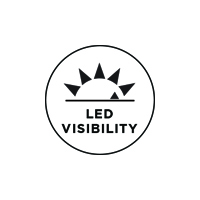The ability to clearly see your LED lighting circuitry in a variety of applications is critical for communication and production processes in addition to the safety of employees, clientele and members of the public. Visibility challenges are present in both indoor and outdoor applications making it necessary to test and overcome these factors for full circuit optimization and use.

Indoor LED Visibility Challenges
Indoor LED visibility challenges can range from bright ambient lighting to obstructions, temperature, environmental chemicals or the operating voltage and current being applied to the circuit. LEDs have been proven to be substantially more reliable than other lighting options but there are still considerations that must be addressed when selecting and implementing LED circuitry.
LED use in wet locations such as kitchens, where cleaning elements are present or a variety of production scenarios where chemicals or compounds can damage electrical components must be planned for and addressed. When LEDs are being implemented for panel indication or facility communication, obstructions, temperature and lighting will be your major challenges.
Outdoor LED Visibility Challenges
Planning, designing and implementing LEDs in the outdoors faces all the challenges of indoor applications and also presents new challenges. Once nature and the environment enter the picture, weather conditions such as fog, extreme temperatures, humidity and storms come into play as well as nighttime glare and the phantom effect caused by the sun, where sunlight gives the appearance of illumination.
Testing Visibility
There are a number of options for testing visibility, from human testing to software testing applications and permanent inline intensity testers. For obstructions, nothing beats having the world’s oldest tester, a human, testing visibility around obstructions both during and after design. In the midst of production, an inline tester can be put in place that will give intensity and thus visibility readings. After production, a light probe can test intensity by measuring the current. As current increases, the intensity follows.
Specially designed LEDs are produced for wide viewing angle applications, daylight viewing and nighttime glare solutions. There are also LEDs materials and assemblies that are designed to be tamperproof and are fully sealed to protect from the elements and environmental hazards. Selection of the correct LED device for these applications is crucial in overcoming the environmental characteristics.
One or a combination of these testing options and correct selection of LED components will ensure that your LED circuitry will be visible and provide the communication required for any specific application.
LED Selection Assistance
If you’re facing special visibility or environmental challenges, teaming with the right supplier can ease your mind and ensure that you will select and implement the right LED as well as provide information about various testing procedures and devices available on the market to meet your visibility testing needs. Contact VCC for these and all your LED needs.







Comments 3
Your blog has become an indispensable resource for me. I’m always excited to see what new insights you have to offer. Thank you for consistently delivering top-notch content!
Simply extraordinary! Your in-depth analysis and crystal-clear explanations make this a must-read. The amount of valuable information you’ve packed in here is amazing.
Reading this evokes the sensation of turning over a smooth stone, revealing small but meaningful textures beneath the surface, each detail quietly significant.